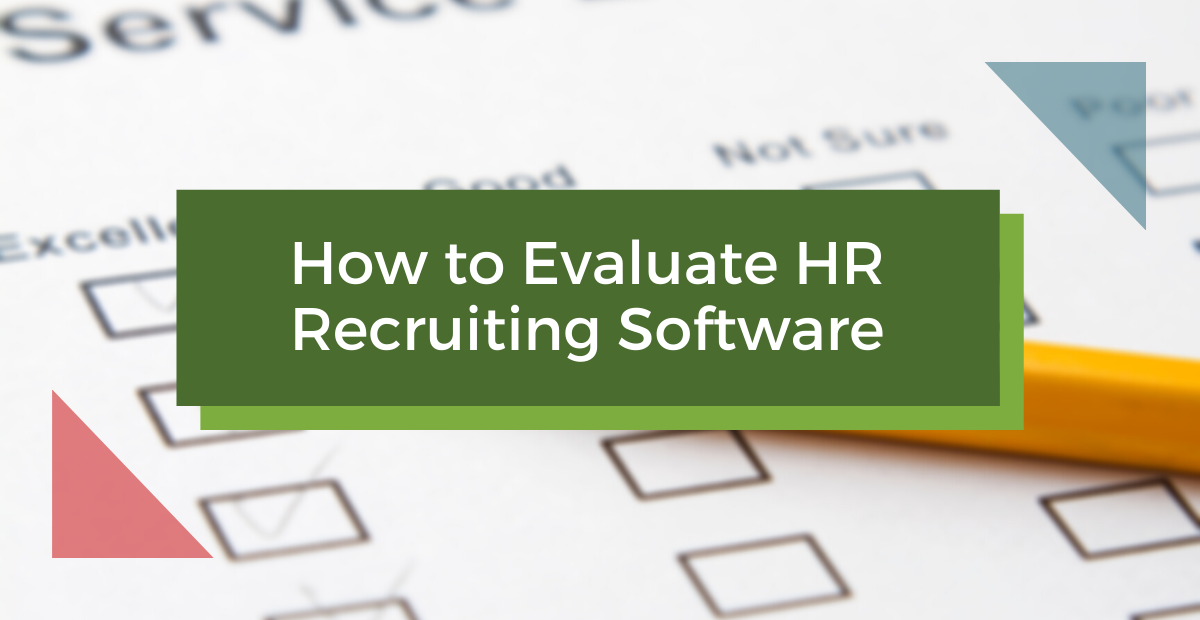Guest Post by Skornia Allison.
How do we evaluate a human capital management technology or software to make sure it fulfills all of our recruiting needs? With the countless solutions out there, making a pick can be quite difficult. While someone is trying to sell you a product that is configurable and easy-to-use, someone else may be pitching about the features of their product that are hard to find. Most of what of what you should be selecting depends on what is fit for your organization and its recruiting needs. If you’re not a large company, you may not need highly advanced software with extensive options. You could be a small/medium sized organization looking for simplistic solutions to fulfill only the most basic of needs.
Conducting a thorough evaluation of the recruiting tools available and deciding what should or should not be implemented is necessary to ensure an efficient and painless recruiting process. Without a doubt, the best solution has a propensity to speed up the recruiting process, involve more people in the hiring process, and enable you to focus on the tasks that are best handled in-person. Here’s my guide to evaluating HR recruiting technology – a way to help you sift through piles of technology and software solutions.
1 Figure Out What You Want and Why: This company-vendor fit and is probably the most crucial step in the process. iCIMS recommends that you first identify what makes your corporate culture unique to help create an authentic portal. With an “employment brand” in mind they suggest you sell your organization’s employment and bring the brand to life. You should also have a candidate experience in mind that determines how the candidates will feel about the hiring process regardless of whether or not they get hired. Lastly, they recommend you build a recruiting team that includes the hiring manager or the senior management who know the goals of the recruiting process. With that and the “needs list” you are all prepped up to contact vendors and assess your recruiting solutions.
2 Assess Your Means: There is a variety of software solutions suited to any organization’s needs and financial means. Don’t waste your time running after the best or the most expensive of softwares if it’s not a viable option. You need to be mindful of the budget before you start researching and selecting vendors. Try to stick to the budget as much as possible.
3 Create Requests for Information (RFI’s): So many organizations ignore the need for an RFI which is also a very important step in the evaluation process. The RFI will include the most important question that needs to be answered by the vendors in writing. For example, who the vendor is, how well they serve the needs of your organizations, do they have any certifications you may require, , what are their preferred modes of communication, and other requirements that you may have of the vendor. With the same RFI document sent to your vendors, you can compare “apples with apples” and round up some of the best fits.
4 Run the Demos: The demos should be forgotten until you have received all the RFI’s and conducted plenty of research and comparison after which you finally picked out the top three potentials vendors. During the demos, make sure your recruiting team is present since they are going to be the end users of the product. It is extremely important for the users to be comfortable with the software or technology they will be using. If the department of users is a large one, select a sample of the group. Remember, this should be a mutual decision, not one that is made by the executives only.
About the Guest Author:
An specialist in the realm of corporate consulting, Skornia Alison helps emerging managers, leaders and entrepreneurs with finding a less rough path of individuals to strive and thrive in their endeavors.

